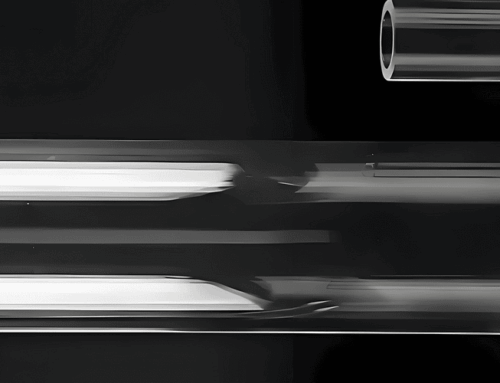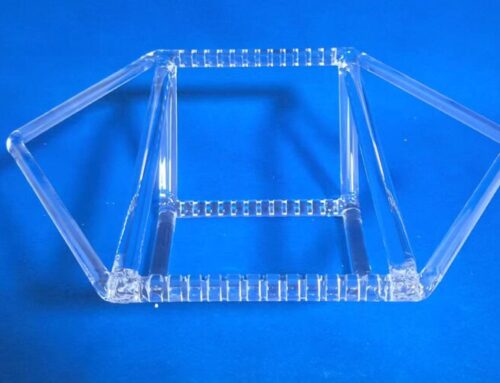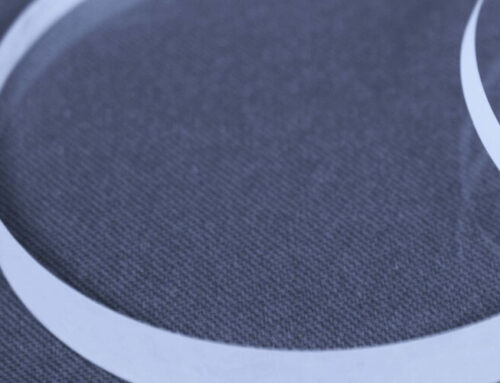Quartz glass is the basic material for the production of optical fiber because it has good UV transmission performance and very low absorption of visible light and near-infrared light. Besides the thermal expansion coefficient of quartz glass is extremely small. Its chemical stability is good, and the bubbles, stripes, uniformity and birefringence are comparable to those of ordinary optical glass. It is the best optical material under the harsh environment.
Classification by optical properties:
1. (Far UV Optical Quartz Glass) JGS1
It is an optical quartz glass made of synthetic stone with SiCl 4 as raw material and melted by high purity oxyhydrogen flame. So it contains a large amount of hydroxyl (around 2000 ppm) and has excellent UV transmission performance. Especially in the short wave UV region, its transmission performance is far better than all other kinds of glass. The UV transmission rate at 185nm can reach 90% or more. The synthetic quartz glass get very strong absorption peak at 2730 nm and has no particle structure. It is an excellent optical material in the range of 185-2500nm.
2. (UV Optical Quartz Glass) JGS2
It is quartz glass produced by gas refining with crystal as raw material, containing dozens of PPM metal impurities. There are absorption peaks (hydroxyl content 100-200ppm) at 2730nm, with stripe and particle structure. It is a good material in the wave band range of 220-2500 nm.
3. (Infrared Optical Quartz Glass) JGS3
It is a kind of quartz glass produced by vacuum pressure furnace (i.e. electrofusion method) with crystal or high-purity quartz sand as raw material which contains dozens of PPM metal impurities. But it has small bubbles, particle structure and fringes, almost no OH, and has high infrared transmittance. Its transmittance is over 85%. Its application range is 260-3500 nm optical materials.
There is also a kind of all wave band optical quartz glass in the world. The application band is 180-4000nm, and it is produced by plasma chemical phase deposition (without water and H2). The raw material is SiCl4 in high purity. Adding a small amount of TiO2 can filter out the ultraviolet at 220nm, which is called ozone free quartz glass. Because ultraviolet light below 220 nm can change oxygen in the air into ozone. If a small amount of titanium, europium and other elements are added into the quartz glass, the short wave below 340nm can be filtered out. Using it to make electric light source has health care effect on human skin. This kind of glass can be completely bubble free. It has excellent ultraviolet transmittance, especially in the short wave ultraviolet region, which is far better than all other glasses. The transmittance at 185 nm is 85%. It is an excellent optical material in 185-2500nm wave band of light. Because this kind of glass contains OH group, its infrared transmittance is poor, especially there is a large absorption peak near 2700nm.
Compared with ordinary silicate glass, transparent quartz glass has excellent transmission performance in the whole wavelength. In the infrared region, the spectral transmittance is larger than that of ordinary glass, and in the visible region, the transmittance of quartz glass is also higher. In the ultraviolet region, especially in the short wave ultraviolet region, the spectral transmittance is much better than other kinds of glass. The spectral transmittance is affected by three factors: reflection, scattering and absorption. The reflection of quartz glass is generally 8%, the ultraviolet region is larger, and the infrared region is smaller. Therefore, the transmittance of quartz glass is generally no more than 92%. The scattering of quartz glass is small and can be ignored. The spectral absorption is closely related to the impurity content of quartz glass and the production process. The transmissivity in the band lower than 200 nm represents the amount of metal impurity content. The absorption in 240 nm represents the amount of anoxic structure. The absorption in visible band is caused by the presence of transition metal ions, and the absorption in 2730 nm is the absorption peak of hydroxyl, which can be used to calculate the hydroxyl value.




